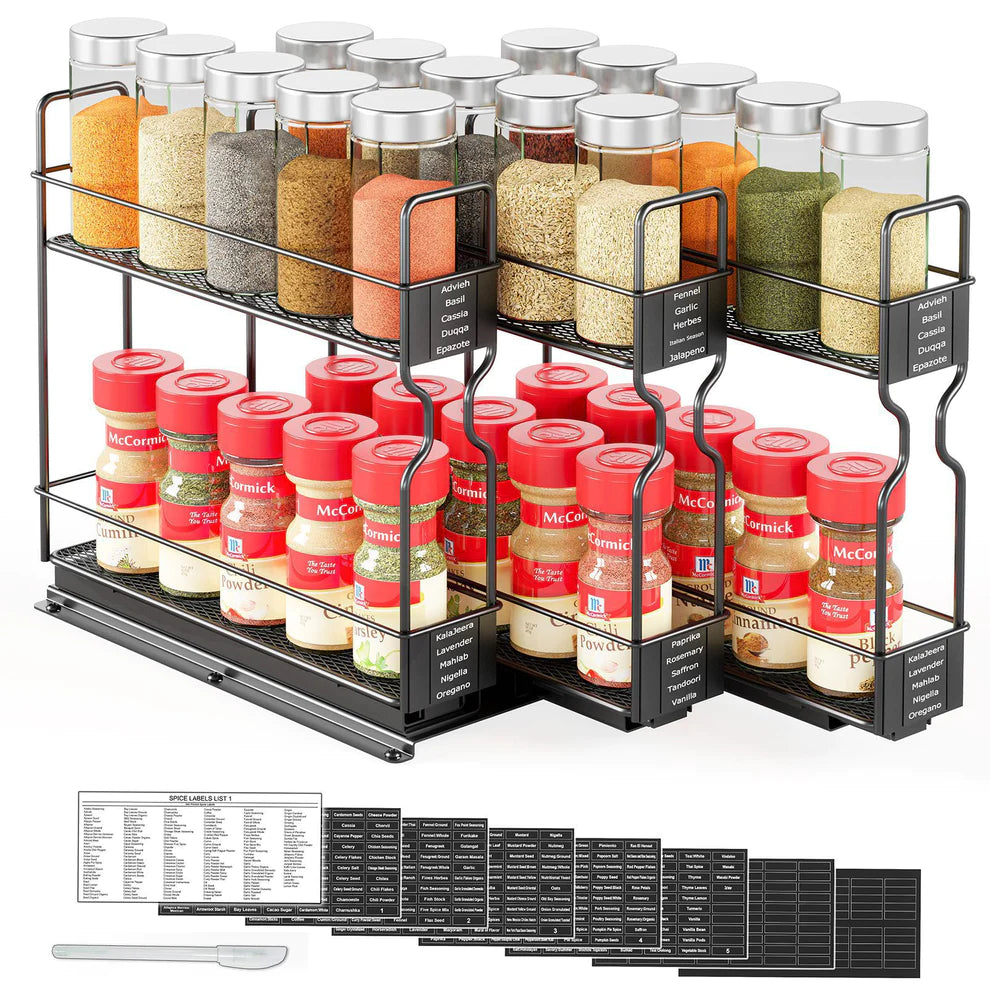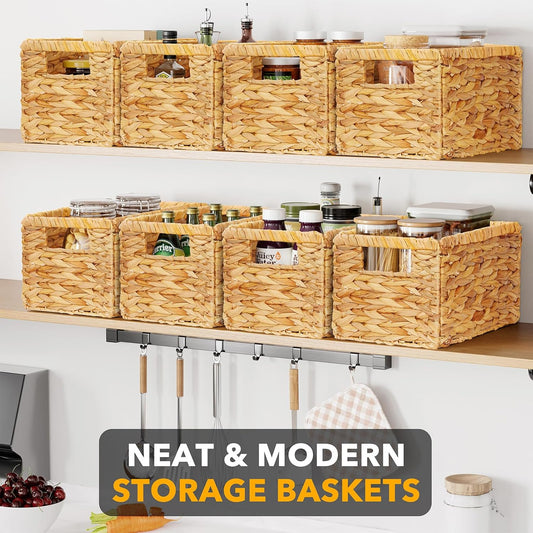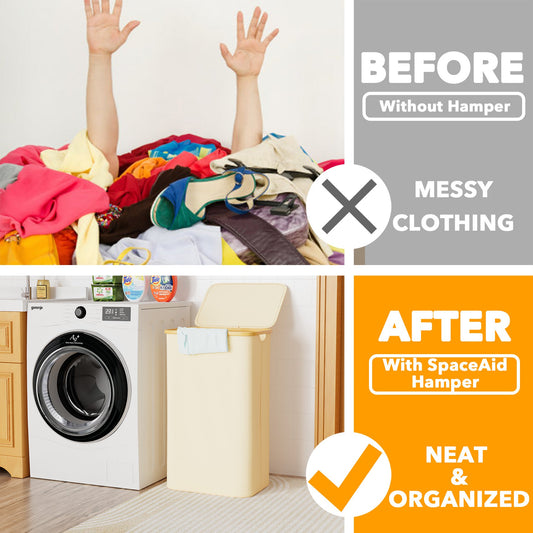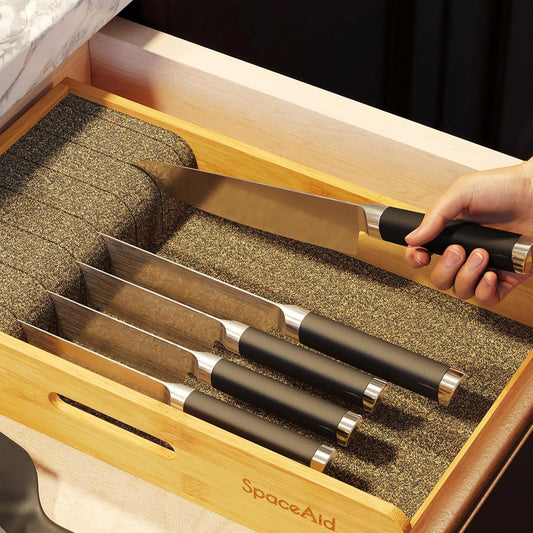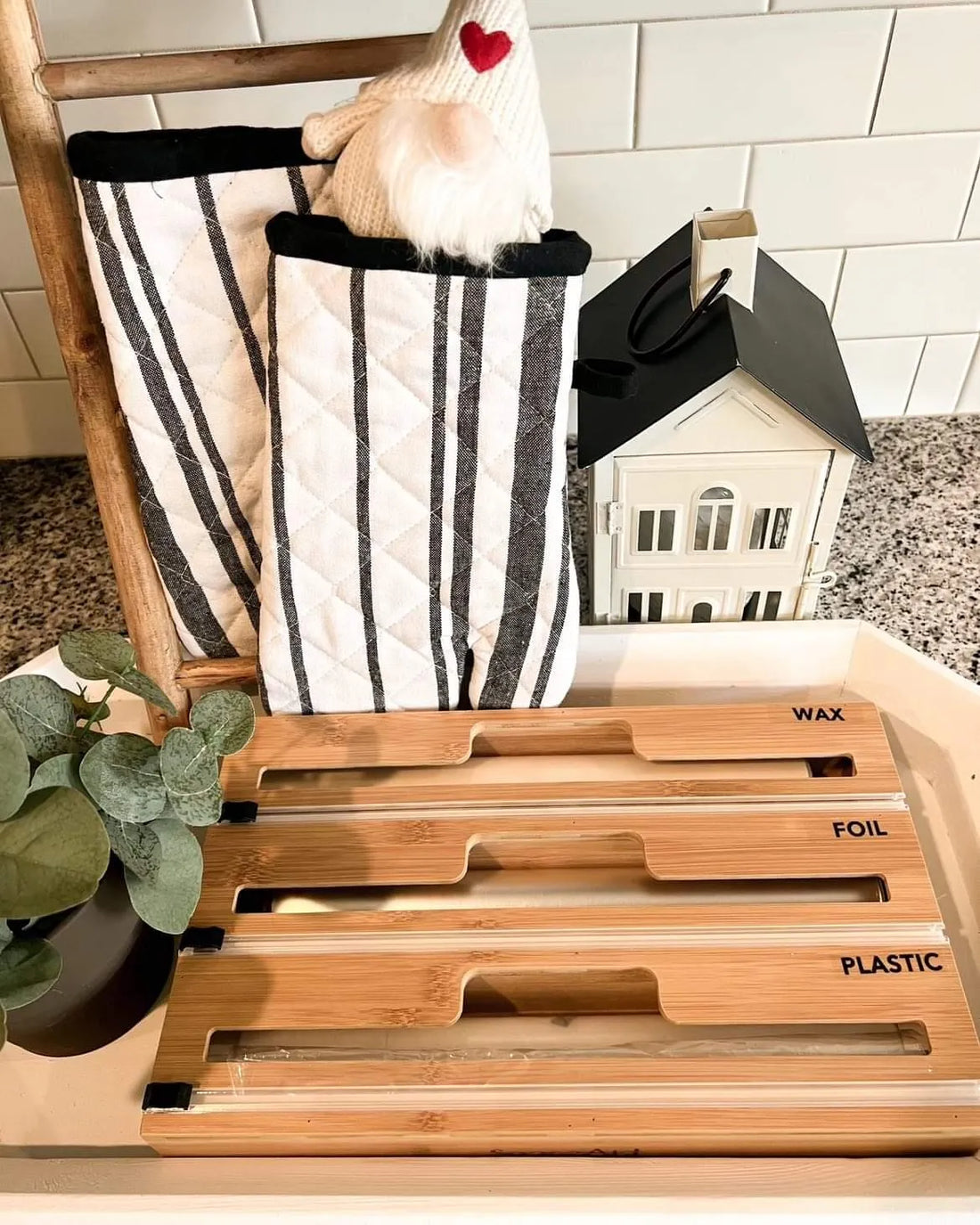
Wrapped in Convenience Exploring the Advantages of Wrap Dispensers in Modern Living
In today’s fast-paced world, finding efficient and convenient solutions for everyday tasks is essential. When it comes to food packaging, a process that is integral to meal preparation, storage, and transportation, the need for streamlined methods becomes even more crucial. This is where wrap dispensers come into play. Wrap dispensers are innovative devices designed to simplify the process of food wrapping, offering a range of benefits such as time-saving convenience, improved food preservation, waste reduction, and enhanced organization. By exploring the historical context, types of wrap dispensers, and their advantages, we can delve into the transformative impact of these devices on our culinary practices. Furthermore, we will focus on the SpaceAid wrap dispenser, a standout option that combines functionality, sustainability, and space-saving design. Join us as we delve into the world of wrap dispensers and discover how these devices have revolutionized food packaging, making it more efficient, organized, and environmentally friendly.
Historical Context
Food wrapping and packaging have evolved significantly throughout history, reflecting changes in cultural practices, technological advancements, and societal needs. Early human civilizations relied on natural materials like leaves, animal skins, and woven baskets to wrap and store food. These materials provided basic protection against spoilage and insects.
As societies progressed, more sophisticated methods of food packaging emerged. In ancient Egypt, for example, papyrus reeds were used to wrap and store food, offering improved protection and portability. In East Asia, bamboo leaves were employed to wrap rice and other perishable items, providing natural insulation and preserving freshness.
The Industrial Revolution in the 19th century marked a significant shift in food packaging practices. With the advent of mass production and advancements in materials, packaging moved beyond natural resources. The paper became a popular choice for food wrapping, offering convenience and improved protection. Tin foil, developed in the early 20th century, provided a barrier against moisture, light, and oxygen, extending the shelf life of various food products.
As modern living demands increased efficiency and convenience, wrap dispensers emerged as a solution to simplify the process of food wrapping and packaging. These devices aimed to address the challenges posed by traditional methods, such as tangled rolls, difficulty in cutting precise portions, and inadequate storage.
The concept of wrap dispensers gained traction in the mid-20th century. Early models featured countertop designs with built-in cutters, allowing users to pull out the desired length of wrap and obtain clean, straight cuts. These dispensers revolutionized food wrapping in residential kitchens, saving time and reducing waste.
With the rise of commercial food service establishments, the need for efficient wrap dispensers grew. Wall-mounted models became popular in restaurants, delis, and other food-related businesses, enabling rapid and consistent wrapping processes. These dispensers offered easy access to wraps while keeping the work area organized and tidy.
In recent years, the demand for portable and handheld wrap dispensers has increased. These compact devices provide convenience for on-the-go individuals, enabling them to wrap food items quickly and securely in various settings, such as picnics, camping trips, or office lunches.
Throughout its evolution, the wrap dispenser has undergone advancements in design, materials, and functionality. Manufacturers have explored innovative features, including adjustable cutting blades, non-slip bases, and compatibility with different types of wraps. These developments have further improved the efficiency and user experience of wrap dispensers.
The historical context of food wrapping and packaging demonstrates the continuous efforts to enhance convenience, efficiency, and preservation in the culinary world. The introduction of wrap dispensers has undoubtedly played a vital role in simplifying the process of food wrapping and packaging, transforming it into a more streamlined and organized practice. As we delve into the advantages and applications of wrap dispensers, we can appreciate how these devices have become indispensable tools in modern living, catering to the needs of both residential and commercial settings.
Types of Wrap Dispensers
Traditional countertop wrap dispensers are a popular choice for residential kitchens and smaller food service establishments. These models are designed to sit on the kitchen countertop, providing easy access to wraps during meal preparation and storage. They typically feature a sturdy base, a serrated cutting blade, and a roll holder to keep the wrap securely in place.
The countertop models offer convenience and simplicity. Users can effortlessly pull out the desired length of wrap from the dispenser, while the built-in cutting blade ensures clean and precise cuts. Many of these dispensers also incorporate features like non-slip bases or suction cups to provide stability during use. Moreover, some models offer compatibility with different types of wraps, including plastic wrap, aluminum foil, and parchment paper.
Wall-mounted wrap dispensers are commonly found in commercial kitchens, delis, and restaurants. These dispensers are installed directly onto the wall, optimizing space utilization and keeping the work area organized. Wall-mounted models feature a roll holder, a cutting mechanism, and a storage compartment for additional rolls.
The key advantage of wall-mounted dispensers is their accessibility and efficiency. By having the dispenser mounted at an appropriate height, users can swiftly access the desired wrap length without the need for extra handling or searching for rolls. The cutting mechanism ensures consistent cuts and minimizes waste. Additionally, the storage compartment allows for quick roll replacements, ensuring uninterrupted food-wrapping operations.
Portable handheld wrap dispensers cater to individuals who require flexibility and mobility in their food wrapping needs. These compact devices are designed to be lightweight and easily portable, making them ideal for picnics, camping trips, or office lunches.
Handheld wrap dispensers typically feature a compact body with a concealed cutting blade. Users can insert the roll of wrap into the device, pull out the desired length, and then utilize the cutting mechanism to obtain clean and precise cuts. Some handheld models incorporate safety locks or caps to secure the cutting blade during storage and transportation.
The advantage of portable handheld dispensers lies in their versatility and convenience. They offer a practical solution for individuals who frequently pack meals on the go, allowing for efficient and mess-free food wrapping. Whether it’s wrapping sandwiches, fruits, or snacks, these dispensers ensure quick and reliable packaging while maintaining the freshness of the food.
As wrap dispensers have evolved, manufacturers have focused on addressing the specific needs and preferences of users. This has resulted in a diverse range of dispenser types, each catering to different settings and requirements. Whether it’s the convenience of countertop models, the efficiency of wall-mounted dispensers, or the portability of handheld devices, the variety of wrap dispensers available in the market ensures that individuals can find a suitable option to streamline their food wrapping processes.
Advantages of Wrap Dispensers
One of the key advantages of wrap dispensers is the convenience they offer in food wrapping and packaging. With a wrap dispenser at hand, individuals can easily access and cut the desired length of a wrap without the hassle of dealing with tangled rolls or searching for scissors. The built-in cutting mechanism ensures clean and precise cuts, saving time and effort during meal preparation. Whether it’s wrapping sandwiches, covering leftovers, or storing ingredients, wrap dispensers streamline the process and contribute to a more efficient culinary experience.
Wrap dispensers play a crucial role in improving food preservation and maintaining hygiene standards. The precise cutting mechanism ensures that wraps are securely sealed around the food, preventing air and moisture from compromising its freshness. By creating an airtight barrier, wrap dispensers help extend the shelf life of various food items, reducing the chances of spoilage and food waste. Additionally, the dispenser’s hygienic design minimizes direct contact with the wrap, reducing the risk of contamination and enhancing overall food safety.
Wrap dispensers contribute to waste reduction and offer cost-effective solutions in food packaging. By providing pre-measured portions, these devices help eliminate unnecessary excess wrapping materials, preventing overuse and reducing overall waste generation. This not only aligns with sustainability efforts but also translates into cost savings in the long run. With a wrap dispenser, individuals can efficiently utilize their resources, minimizing the need for frequent repurchasing of wrapping materials. The ability to cut wraps to the desired length also reduces the likelihood of excessive use, ensuring efficient and economical food wrapping.
Wrap dispensers promote enhanced organization and storage solutions in the kitchen or food service environment. The precise cutting mechanism and the availability of multiple wrap sizes allow for better management of wraps and other food storage essentials. Countertop models keep the wraps easily accessible while maintaining a clutter-free workspace. Wall-mounted dispensers optimize space utilization and keep the work area organized, ensuring a streamlined food-wrapping process. The SpaceAid wrap dispenser, designed to fit in a kitchen drawer, allows for neat storage and easy access to wraps, maximizing kitchen space and minimizing clutter. These organizational advantages simplify the cooking and wrapping process, enabling individuals to enjoy a more efficient and enjoyable culinary experience.
The advantages of wrap dispensers encompass convenience, improved food preservation, waste reduction, cost-effectiveness, and enhanced organization. By incorporating these devices into their daily routine, individuals can experience streamlined food wrapping processes, extended food freshness, reduced waste generation, and efficient storage solutions. Wrap dispensers have truly revolutionized the way we approach food packaging, enhancing our overall living experience in the modern world.
Recommendation of SpaceAid Wrap Dispenser
Among the wide array of wrap dispensers available in the market, the SpaceAid wrap dispenser stands out as an exceptional choice. Crafted from sustainable bamboo, this dispenser offers a combination of functionality, eco-friendliness, and space-saving design. Its unique features make it a recommended option for individuals seeking a reliable and efficient wrap dispenser for their kitchen or food service setting.
One of the standout features of the SpaceAid wrap dispenser is its construction using sustainable bamboo. Bamboo is a fast-growing and renewable resource, making it an environmentally friendly choice. By opting for a bamboo wrap dispenser, individuals contribute to reducing their carbon footprint and supporting sustainable practices. The SpaceAid wrap dispenser aligns with the principles of eco-friendly living, making it an ideal choice for those conscious of their environmental impact.
The SpaceAid wrap dispenser is specifically designed to fit perfectly in a standard kitchen drawer, offering a space-saving solution. With limited countertop space being a common concern in many kitchens, the ability to store the wrap dispenser neatly in a drawer eliminates clutter and maximizes available workspace. This design feature is particularly advantageous for individuals who value an organized and efficient kitchen environment.
The SpaceAid wrap dispenser caters to diverse wrapping needs by offering three size options – one wrap, two wraps, or three wraps. This versatility allows users to choose the appropriate wrap length based on the specific food item or storage requirement. Whether it’s wrapping small sandwiches, covering larger platters, or storing multiple portions, the SpaceAid wrap dispenser ensures flexibility and precision. The availability of multiple-size options makes it a versatile tool that can adapt to different culinary scenarios.
In conclusion, the SpaceAid wrap dispenser offers a range of features that make it a highly recommended choice. Its sustainable bamboo construction showcases a commitment to eco-friendliness and responsible resource usage. The space-saving design, allowing for easy storage in a kitchen drawer, contributes to an organized and clutter-free workspace. Additionally, the dispenser’s versatility with three size options ensures precise and efficient food wrapping for various items. Overall, the SpaceAid wrap dispenser combines functionality, sustainability, and space-saving features, making it an excellent investment for individuals seeking a reliable and eco-friendly solution for their food packaging needs.
In light of these considerations, I wholeheartedly recommend the SpaceAid wrap dispenser to anyone looking for a high-quality and versatile tool that enhances the convenience, organization, and eco-friendliness of their food wrapping process. By opting for the SpaceAid wrap dispenser, individuals can experience the benefits of sustainable materials, efficient space utilization, and precise wrapping capabilities, ultimately simplifying their culinary endeavors and contributing to a more sustainable lifestyle.
At the end
Wrap dispensers have significantly transformed the way we approach food packaging, offering convenience, efficiency, and improved preservation. The historical context highlights the evolution of food wrapping and packaging, with wrap dispensers emerging as a solution to simplify the process and address the challenges posed by traditional methods. The various types of wrap dispensers, including traditional countertop models, wall-mounted dispensers, and portable handheld devices, cater to different settings and requirements, ensuring accessibility and efficiency in food wrapping. The advantages of wrap dispensers encompass convenience, improved food preservation, waste reduction, cost-effectiveness, and enhanced organization. These devices save time, preserve food freshness, reduce waste, and provide efficient storage solutions. Among the available options, the SpaceAid wrap dispenser stands out with its sustainable bamboo construction, space-saving design, and versatility with three size options. By opting for the SpaceAid wrap dispenser, individuals can experience the benefits of functionality, sustainability, and efficient space utilization. Ultimately, wrap dispensers, such as the SpaceAid wrap dispenser, have become indispensable tools in modern living, simplifying the food packaging process, enhancing organization, and contributing to a more sustainable and enjoyable culinary experience.

